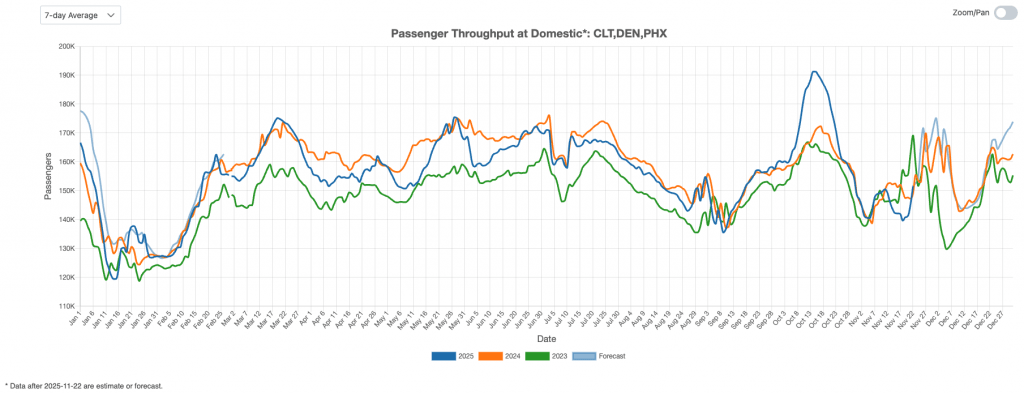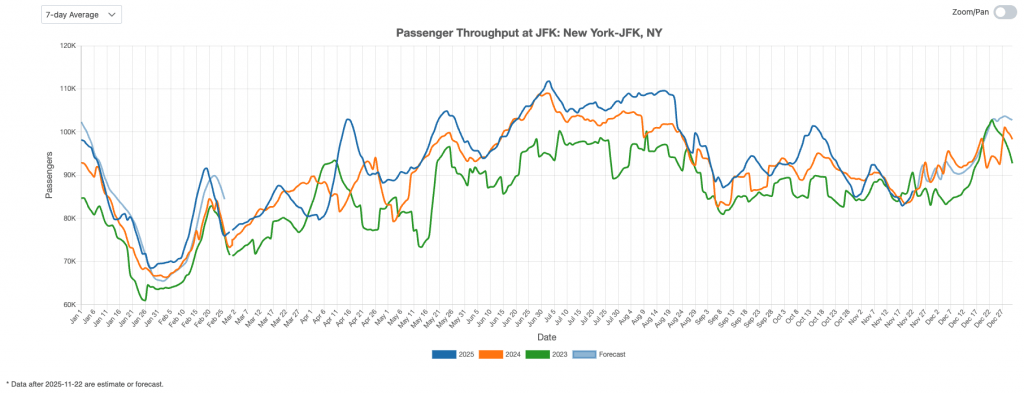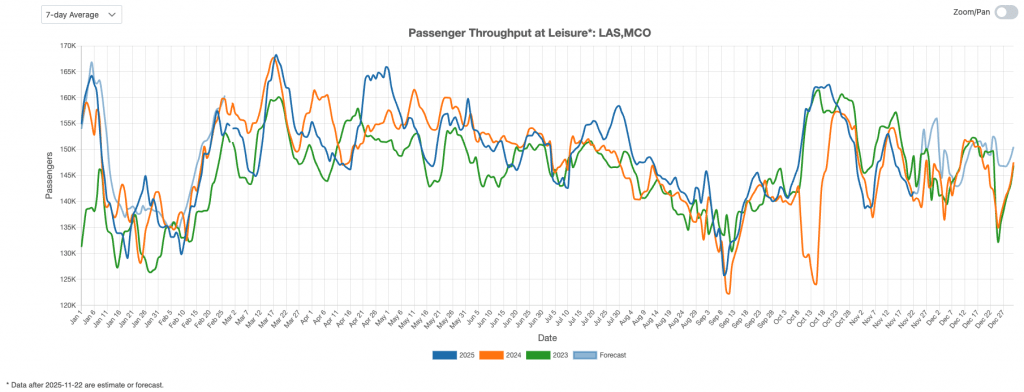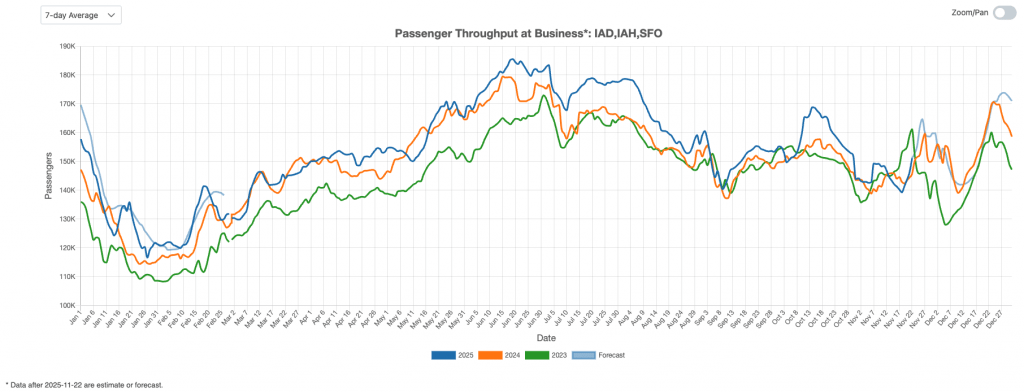Daily and hourly airport traffic is crucial for businesses related to airports, including airport authorities, airlines, retailers, ground handlers, rental car companies, and hotels. If you belong to any of these industries, utilizing daily airport traffic data can help you plan your operations, schedule your resources, forecast revenue, and plan budgets more accurately. Additionally, this data can help you target your marketing and promotional efforts more specifically, leading to more effective business strategies.
FlightBI collects and normalizes the airport passenger throughput data from US Transportation Security Administration (TSA). In addition, it has developed a product called Fligence TSA, which features a wide variety of data visualizations. FlightBI is currently offering a two-week, no-obligation trial of Fligence TSA for you to explore valuable insights from the airport traffic data.
This article summarizes US air traffic using the aforementioned tool, utilizing actual airport-level data as of November 22, 2025. Our analysis will examine trends in different segments of air travel, such as domestic versus international flights and leisure versus business travel. To learn more about the specific airports chosen to represent these markets, please refer to this article.
U.S. Airport Traffic Overview
As shown in Figure 1, U.S. airport traffic rose from approximately 2.2 million passengers per day in early September 2025 to 2.7 million by mid-October, before easing back to around 2.2 million per day by mid-November. This fluctuation aligns with typical seasonal patterns, though the magnitude of this swing is more pronounced than in the previous two years. Current forecasts indicate that passenger volumes will track between 2023 and 2024 levels for the remainder of the year and are expected to surpass both benchmarks as we enter the new year.

Figure 1: US Overall Air Traffic Trend
Domestic Airport Traffic Indicator
Figure 2 highlights travel trends at major domestic hubs, including Charlotte (CLT), Denver (DEN), and Phoenix (PHX). Passenger throughput at these airports rebounded sharply following the early-September low, but the subsequent decline after mid-October was equally rapid, producing an unusually pronounced peak in October. By November, traffic levels had normalized. Forecasts for the coming months anticipate volumes comparable to last year, with the potential for a year-end surge.

Figure 2: US Domestic Air Traffic Indicator
International Airport Traffic Indicator
Figure 3 illustrates passenger volume trends at New York’s JFK Airport, a major international gateway. International traffic grew steadily from early September, reached a peak in October, and then declined. The near-term outlook mirrors last year’s pattern, with expectations of modest growth in the coming month.

Figure 3: US International Air Traffic Indicator
Leisure Air Traffic Indicator
Figure 4 provides an overview of U.S. leisure air travel trends. Throughout most of September and October 2025, passenger volumes at leisure-focused airports—such as Las Vegas (LAS) and Orlando (MCO)—remained above 2024 levels. Forecasts suggest this strength will continue in the months ahead, with a seasonal peak expected shortly after New Year’s Day.

Figure 4: US Leisure Air Traffic Indicator
Business Air Traffic Indicator
Figure 5 shows that business travel has remained relatively stable, with a noticeable peak in October 2025. On most days, passenger volumes continued to exceed those observed during the same period in 2024. Projections indicate that business travel will follow similar seasonal fluctuations as last year, with modest year-over-year growth expected as we enter the new year.

Figure 5: US Business Air Traffic Indicator
Across all categories—domestic, international, leisure, and business—U.S. air travel showed strong growth from September to a pronounced October peak before returning to normal levels in November. Most segments tracked at or above 2024 levels, and forecasts suggest continued stability with modest growth and a potential year-end or post-holiday surge as the new year begins.
